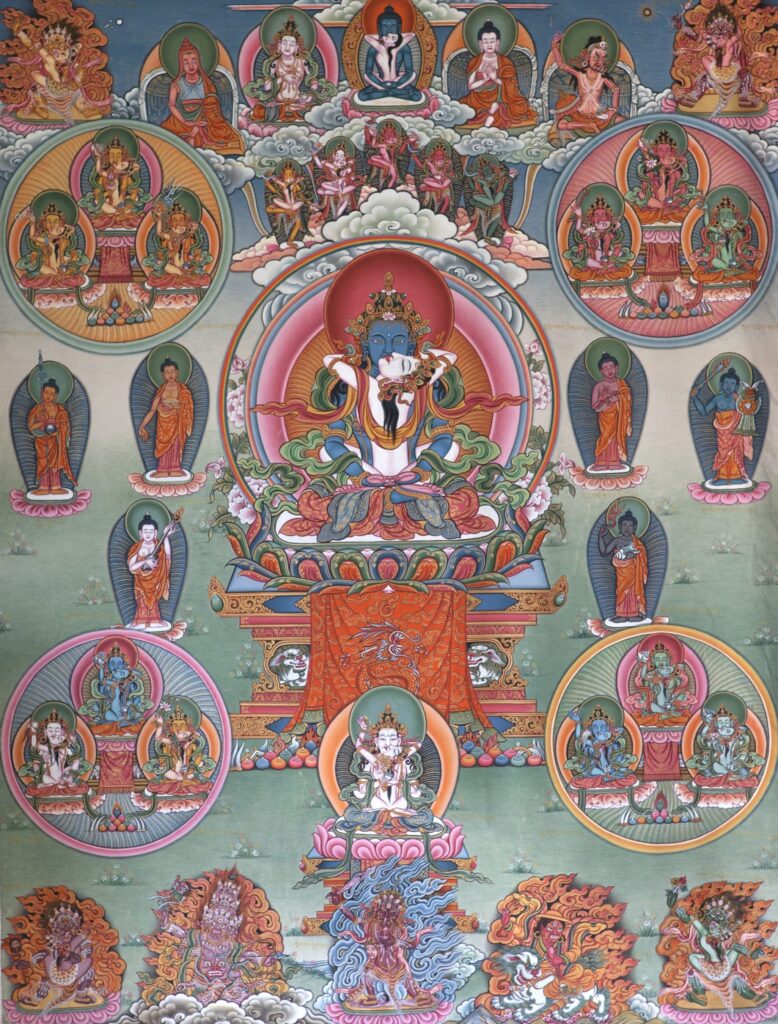The Kunzang Tuktik, or Heart essence of Samantabhadra is a profound Maha-Ati-yoga Dzogchen terma. In the development stage, the peaceful and wrathful deities are the focus of practice and trekchö and tögal are the completion stage. The sādhana includes offerings to the 100 deities to benefit and liberate the bardo beings. The great tertön Chokgyur Dechen Shikpo Lingpa extracted the body representation known as Ja-ö Kyilba, Glowing Swirls of Rainbow Lights, and the terma teaching of the Kunzang Tuktik from the cave called Yubar Drapuk, Glowing Turquoise Cave on the southern slope of Yegyal Namkhadzö.


In the colophon at the end of the text, Padmasambhava explains that “this is a complete sādhana condensed from all the tantras. It is simple to apply, concise and complete. For the benefit of future generations, may it meet with the destined one.” The destined one refers to Chokgyur Lingpa, who later revealed it. The text also mentions that Yeshe Tsogyal should write it down for this purpose and that the Dzogchen teachings will flourish at the end of the Dark Age.
Kunzang Tuktik belongs to the Great Perfection, and, therefore, its exclusive focus is on recognizing mind-essence. That is the entire intent.
The sādhana involving the one hundred peaceful and wrathful sugatas is a very precious and profound support for that. The mandala of peaceful and wrathful deities includes any possible yidam, the Three Jewels, the Three Roots, the deities of the three kayas, and so forth, in myriad ways.
They are not something different from the inner core of our basic nature. Often they are called the deities naturally dwelling in the mandala of one’s vajra body. In other words, through this practice and training, we realize the various aspects of our basic nature.
That is the support of this practice, which is not limited to a retreat situation or a certain stretch of time. This practice of Kunzang Tuktik is a sufficient path for our entire life; it is not something we finish after a while.
It is not like that at all; it is for our entire life. Yidam practice means something we bring into our life in any situation, at any moment, not only when we’re sitting down. Therefore, the Kunzang Tuktik is something you bring along, whether you sit or walk, in whatever you are doing. Don’t have the idea that you should stop after a set number of recitations. On the contrary, continue it for your entire life. To practice a sādhana text such as Kunzang Tuktig as a daily sādhana accumulates immense merit and will purify a vast amount of obscurations. It is a great fortune.
Tulku Urgyen Rinpoche
For a description of the mandala see A Description of the Peaceful and Wrathful Deities for the Künzang Tuktig by Lama Putsi.



